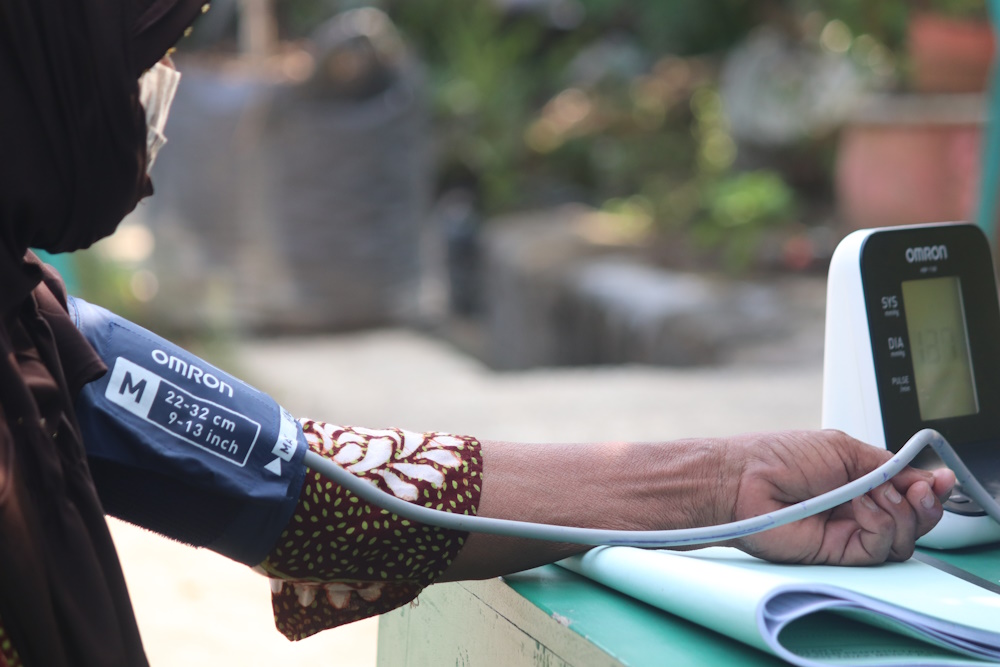Understanding Secondary Hypertension
You’re likely familiar with high blood pressure, or hypertension. It’s when the force of your blood against your artery wall is consistently high, putting a risk factor on your health. Blood pressure medication is normally given to alleviate this issue and monitored through a blood pressure measurement. However, there are two main categories—primary and secondary. While primary hypertension evolves gradually without a clear cause, secondary hypertension and other secondary conditions are a separate story.
Secondary hypertension results from another medical issue, unlike primary hypertension. Instead of being its own problems like primary hypertension cases such as systolic hypertension, arterial hypertension, and more, it’s more like a side effect—stemming from another condition affecting your body. Causes can range from kidney disease to hormonal disorders and even specific medications. Realizing that your high blood pressure isn’t just a standalone issue but a symptom of something else can be both unsettling and liberating; unsettling because another medical problem is at play, but liberating because addressing that root cause often helps manage the high blood pressure as well.
Signs of Secondary Hypertension
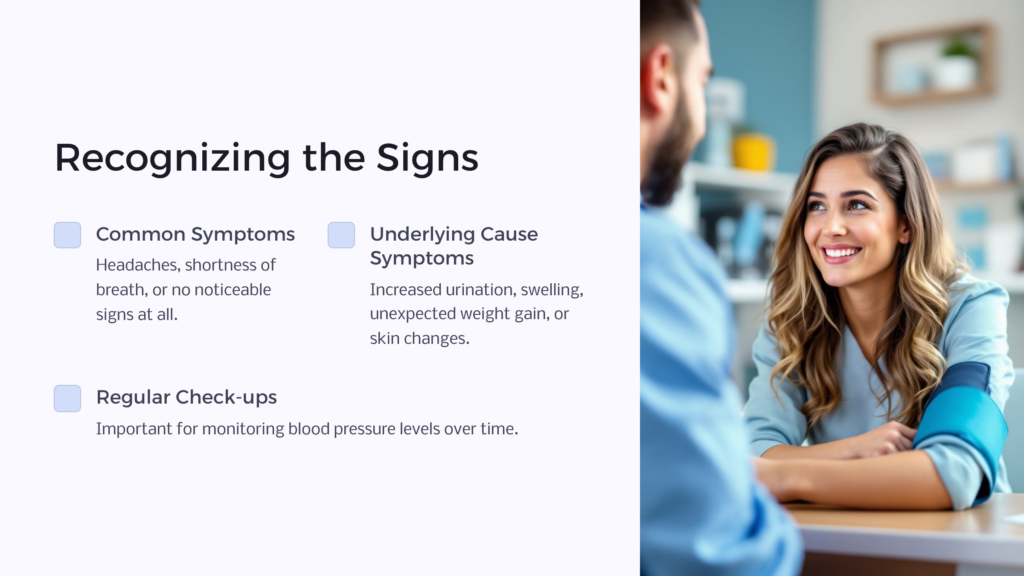
Awareness of symptoms can lead to prompt action, but the symptoms of secondary hypertension aren’t always clear-cut. While some experience noticeable signs like headaches or shortness of breath, others feel completely normal—even when their internal systems are far from it. This underscores the importance of regular check-ups with primary care doctors, especially when comparing normal blood pressure to your current blood pressure level over time.
What sets secondary hypertension apart, though, are symptoms tied to the root cause of the high blood pressure. For instance, if kidney problems are to blame, you may notice increased urination or swelling in your hands and feet. Hormonal issues might lead to symptoms like unexpected weight gain or changes in skin condition.
Spotting these extra symptoms can offer important clues, assisting your healthcare provider in not only treating the high blood pressure but also managing the underlying issue as a possible hypertensive patient. Plus, the quicker you tackle secondary hypertension, the more you reduce your risk factors for severe complications like stroke or heart disease.
What Triggers Secondary Hypertension?
Secondary hypertension isn’t just an isolated case of high blood pressure; it’s high blood pressure sparked by other medical issues, such as cardiovascular disease, heart disease, renal artery stenosis, and more. Often, chronic kidney disease plays a big role in leading to this secondary cause—since kidneys help manage blood pressure, poor function can cascade into cardiovascular issues. Hormonal disorders like hyperthyroidism or Cushing’s syndrome can also be culprits. Less commonly, inborn heart defects, specific medications, or even pregnancy can trigger secondary hypertension.
Certain medications can fuel the fire of secondary hypertension. This includes birth control pills and some over-the-counter pain relievers that can lead to secondary conditions such as hypertension. While you may need these medications for other health issues, they can lead to elevated blood pressure as a side effect. It’s a balancing act—managing the initial problem while also grappling with higher blood pressure. Therefore, full disclosure about all medications you’re taking as a patient—even over-the-counter ones—is vital to your healthcare provider.
Navigating secondary hypertension gets more complicated if you’re already managing a disability like chronic kidney disease or a hormonal disorder. Monitoring your blood pressure and blood flow becomes doubly important; it’s akin to juggling multiple risk factors, as each condition can influence the other. Your primary care doctor can help guide you in the best direction for managing these diseases.
The Consequences of Ignoring Secondary Hypertension
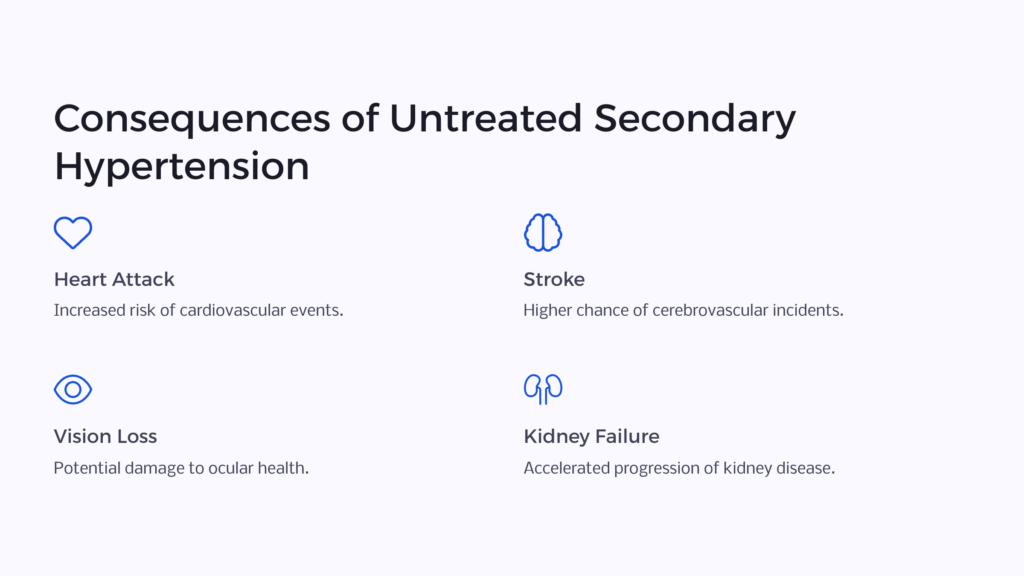
Much like its primary counterpart, unaddressed secondary hypertension can be a risk factor leading to severe issues such as heart attack, stroke, vision loss, or even heart failure. However, the stakes are higher with secondary hypertension because it’s a secondary cause linked to another underlying condition. Failing to treat secondary hypertension could exacerbate your primary issue, whether that’s kidney disease or a hormonal imbalance of aldosterone.
For those already living with a disability, this compounding effect can be particularly dangerous. Take kidney disease, for example. Ignored secondary hypertension could speed up your journey to end-stage kidney disease, kidney failure, or even a heart attack or heart failure—threatening not just your health, but potentially affecting your long-term access to disability benefits as well.
Social Security Benefits for Secondary Hypertension
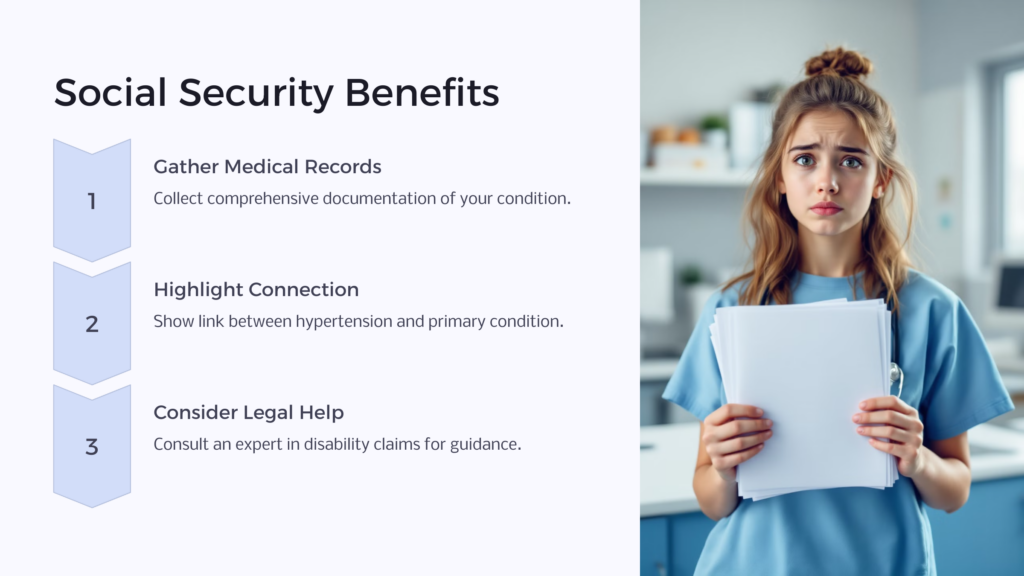
In the U.S., the Social Security Administration (SSA) provides disability benefits for those whose health conditions substantially limit their capacity to work. Secondary hypertension alone might not directly grant you these benefits, but the primary condition causing it could.
Embarking on the application journey requires thorough preparation. Comprehensive medical records are a must, showcasing the intensity of your condition and how it hampers your daily functions. This means gathering doctor’s evaluations, lab results, and treatment histories. Highlighting the connection between your elevated blood pressure through blood pressure measurement and blood flow measurement showcases your cardiovascular risk. Any other disabilities you face can also strengthen your case.
Diving into the complexities of Social Security Disability Insurance (SSDI) or Supplemental Security Income (SSI) can feel daunting. But understanding them is essential, as these benefits can be the lifeline you need amid your health struggles as a hypertension patient. It’s a wise move to rope in a legal expert skilled in disability claims to illuminate the intricate path ahead.
ADA and Secondary Hypertension
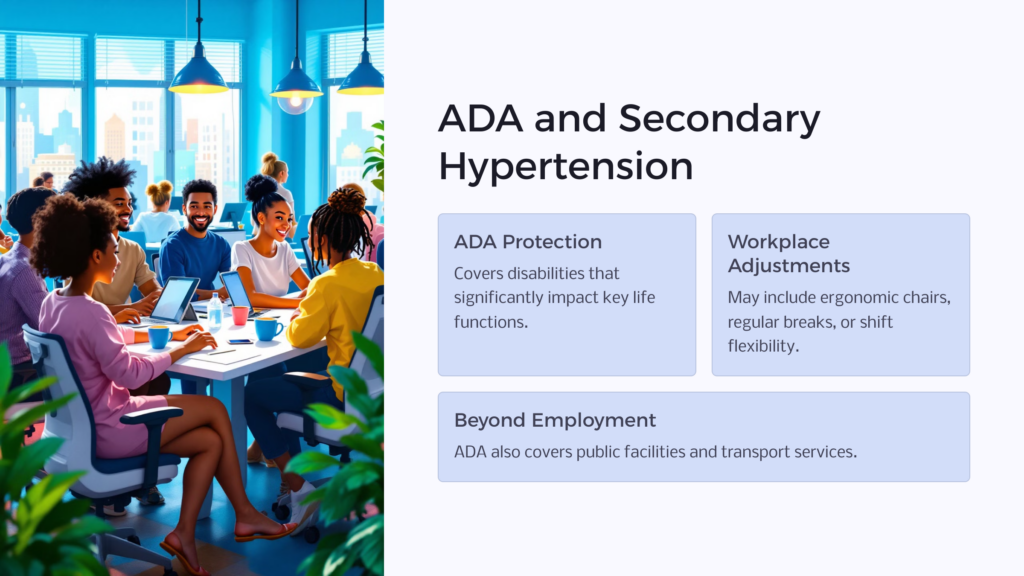
The ADA stands as a landmark law prohibiting disability-based discrimination. But do secondary hypertension benefits fit into its protections? Well, it’s a bit of a gray area. The ADA offers protection to those with a disability that significantly hampers one or more key life functions. If your secondary hypertension—or its root cause—interferes with tasks like working or daily living activities, you might fall under the ADA’s protective shade.
Such protection can translate into diverse workplace adjustments—think ergonomic chairs, regular breaks, or even shift flexibility. But the ADA’s reach goes beyond just employment. It covers public facilities, transport services, and more. Thus, equipping yourself with an understanding of the ADA empowers you to assert your rights, be it at work or while navigating public spaces.
Your health is a journey, one with ups, downs, and various turns. Secondary hypertension might be a part of that journey, but it doesn’t have to dictate the route you take. By arming yourself with knowledge and being proactive in your healthcare, you’re already steering the course toward better health—and potentially, toward securing the disability benefits that can make that journey a bit easier. That’s where Benefits.com comes in, by providing you with a free consultation providing the proper knowledge of benefits available to you over years of experience.
 Benefits.com Advisors
Benefits.com Advisors
With expertise spanning local, state, and federal benefit programs, our team is dedicated to guiding individuals towards the perfect program tailored to their unique circumstances.
Rise to the top with Peak Benefits!
Join our Peak Benefits Newsletter for the latest news, resources, and offers on all things government benefits.















